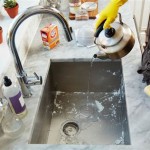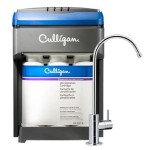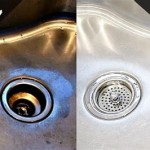How to Fix a Cracked Sink
A cracked sink, whether made of porcelain, acrylic, or composite materials, presents a frustrating problem. Beyond the aesthetic blemish, a crack can weaken the structural integrity of the sink, leading to leaks and potential water damage to surrounding cabinets and flooring. Addressing a cracked sink promptly is crucial to prevent further deterioration and costly repairs. This article provides a comprehensive guide to assessing the damage, selecting the appropriate repair method, and executing the repair process effectively.
Before embarking on any repair, it’s necessary to accurately assess the extent and nature of the crack. Hairline cracks, which are thin and superficial, often pose a lesser threat and can be addressed with simpler techniques. Wider or deeper cracks, however, may signify a more significant structural compromise and require a more robust intervention. Consider the location of the crack as well. Cracks near the drain or along areas of high stress are more prone to expanding and require particularly careful attention.
The material composition of the sink is equally important. Porcelain sinks, known for their durability and aesthetic appeal, are susceptible to chipping and cracking under impact. Acrylic sinks, lighter and more flexible, are generally less prone to cracking but can still sustain damage from sharp objects or extreme temperatures. Composite sinks, a blend of materials like granite or quartz and resin, offer a balance of strength and durability, but they can also develop cracks over time, especially if exposed to harsh chemicals or abrasive cleaners.
Selecting the appropriate repair method depends on the type of crack, the sink material, and the desired aesthetic outcome. Several options are available, ranging from DIY solutions to professional repairs. The choice should be made after careful consideration of the factors mentioned above and an honest assessment of one's skills and comfort level with home improvement projects.
Assessing the Damage and Material
The initial step involves a thorough cleaning of the affected area. Use a mild detergent and warm water to remove any dirt, grease, or soap scum. This ensures that the repair material will properly adhere to the surface. After cleaning, dry the area completely with a clean cloth. Examine the crack closely under good lighting. Note the length, width, and depth of the crack. Use a magnifying glass if necessary to discern the finer details.
Determine the material of the sink. If unsure, check the manufacturer's documentation or consult with a plumbing professional. Understanding the material composition is critical for selecting the appropriate patching compound or epoxy. Using the wrong material can result in a failed repair, further damage, or a mismatched appearance.
For hairline cracks, a simple epoxy repair kit designed for the specific sink material might suffice. These kits typically include a two-part epoxy that, when mixed, creates a durable and waterproof bond. For wider or deeper cracks, a more substantial filler, such as a gel coat repair kit or a specialized acrylic filler, might be necessary. These fillers provide additional structural support and can be sanded and polished to blend seamlessly with the surrounding surface.
If the crack is located in a high-stress area, such as near the drain or mounting hardware, consider reinforcing the repair with a fiberglass cloth or mesh. This adds an extra layer of strength and prevents the crack from reopening under pressure. The fiberglass should be embedded within the filler material for optimal adhesion and support.
DIY Repair Options: Epoxy and Fillers
One of the most common DIY repair methods involves the use of epoxy. Many epoxy products are designed specifically for repairing sinks and offer a durable, waterproof seal. Begin by thoroughly cleaning and drying the area around the crack. Lightly sand the surface surrounding the crack to create a slightly roughened texture, which will improve the epoxy's adhesion. Use fine-grit sandpaper (e.g., 220-grit) and avoid applying excessive pressure.
Mix the two-part epoxy according to the manufacturer's instructions. Be precise with the mixing ratios to ensure proper curing. Apply the epoxy to the crack using a small applicator, such as a putty knife or a toothpick. Work the epoxy into the crack, ensuring that it fills the entire void. Remove any excess epoxy with a clean cloth or a razor blade.
Allow the epoxy to cure completely according to the manufacturer's recommendations. This typically takes several hours or even overnight. Avoid using the sink during the curing process. Once the epoxy is fully cured, lightly sand the surface to smooth out any imperfections. Start with a medium-grit sandpaper and gradually move to a finer grit for a polished finish.
Another option involves using a filler specifically designed for sink repair. These fillers often come in a paste form and are formulated to match the color and texture of the sink material. Follow the same preparation steps as with epoxy, cleaning and sanding the area before application. Apply the filler to the crack using a putty knife, ensuring that it fills the entire void. Overfill the crack slightly, as the filler will shrink slightly as it dries.
Allow the filler to dry completely, typically for 24 to 48 hours. Once dry, sand the surface smooth, starting with a coarse-grit sandpaper and gradually moving to a finer grit. Blend the repaired area seamlessly with the surrounding surface. Apply a sealant or polish to protect the repair and enhance its appearance.
Professional Repair and Replacement
In cases of severe cracking, extensive damage, or when the homeowner lacks the confidence or expertise to perform a DIY repair, professional intervention may be necessary. Professionals possess the specialized tools, materials, and experience to address complex sink repairs effectively and efficiently. They can also assess the structural integrity of the sink and advise on whether repair or replacement is the more appropriate course of action.
Professional sink repair services often involve techniques such as crack injection, bonding, and refinishing. Crack injection involves injecting a specialized resin into the crack to seal it and prevent further propagation. Bonding involves using a strong adhesive to rejoin the cracked pieces, followed by reinforcement with fiberglass or other materials. Refinishing involves applying a new coating to the entire sink surface to conceal the repair and restore its original appearance.
When considering professional repair, obtain quotes from multiple contractors and compare their pricing, experience, and warranty offerings. Ask for references and review their past work to assess their quality and reliability. Ensure that the contractor is licensed and insured to protect yourself from liability in case of accidents or substandard workmanship.
In some situations, replacing the sink may be the most cost-effective or practical solution. If the sink is severely damaged, structurally unsound, or beyond economical repair, replacement may be the only viable option. Replacing a sink involves disconnecting the plumbing, removing the old sink, and installing the new one. This task often requires specialized tools and knowledge of plumbing codes.
When selecting a replacement sink, consider factors such as material, size, style, and cost. Choose a sink that complements the existing bathroom or kitchen décor and meets your functional needs. Ensure that the new sink is compatible with the existing plumbing configuration and that it meets all applicable building codes.

How To Fix A Cracked Porcelain Sink Hometalk

How To Fix A Crack In Porcelain Sink Youtube

How To Patch A Porcelain Sink Crack Himg Surface Repair

How To Fix A Ceramic Or Porcelain Sink 6 Simple Diy Steps

How To Repair A Cracked Sink Foreman Snags

I Have A Huge Crack In My Porcelain Sink What S The Best Way To Fix Hometalk

How To Fix A Cracked Porcelain Sink 8 Steps Prudent Reviews

How To Fix A Chipped Porcelain Sink

How To Fix A Hairline Crack In The Vanit Bunnings Work Community

Thrifty Mum Gets Rid Of A Giant Crack In Her Bathroom Sink Using Easy Repair Kit And Saves Herself Hundreds The Irish Sun







